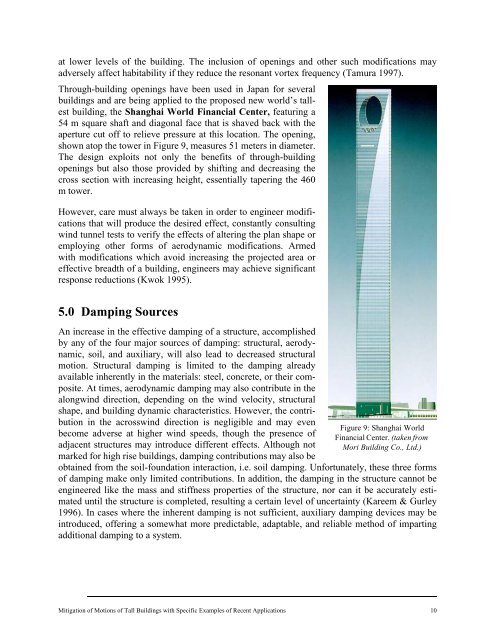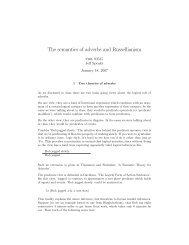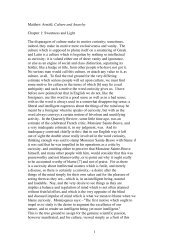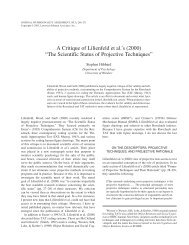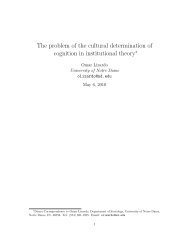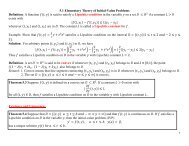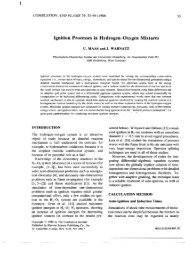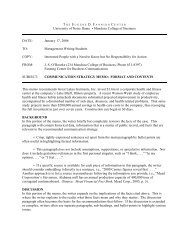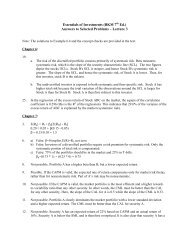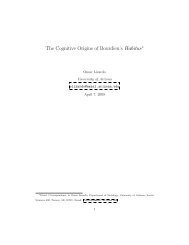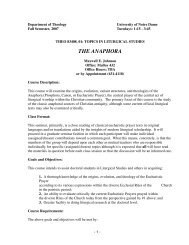Mitigation of Motions of Tall Buildings with Specific Examples of ...
Mitigation of Motions of Tall Buildings with Specific Examples of ...
Mitigation of Motions of Tall Buildings with Specific Examples of ...
Create successful ePaper yourself
Turn your PDF publications into a flip-book with our unique Google optimized e-Paper software.
at lower levels <strong>of</strong> the building. The inclusion <strong>of</strong> openings and other such modifications may<br />
adversely affect habitability if they reduce the resonant vortex frequency (Tamura 1997).<br />
Through-building openings have been used in Japan for several<br />
buildings and are being applied to the proposed new world’s tallest<br />
building, the Shanghai World Financial Center, featuring a<br />
54 m square shaft and diagonal face that is shaved back <strong>with</strong> the<br />
aperture cut <strong>of</strong>f to relieve pressure at this location. The opening,<br />
shown atop the tower in Figure 9, measures 51 meters in diameter.<br />
The design exploits not only the benefits <strong>of</strong> through-building<br />
openings but also those provided by shifting and decreasing the<br />
cross section <strong>with</strong> increasing height, essentially tapering the 460<br />
m tower.<br />
However, care must always be taken in order to engineer modifications<br />
that will produce the desired effect, constantly consulting<br />
wind tunnel tests to verify the effects <strong>of</strong> altering the plan shape or<br />
employing other forms <strong>of</strong> aerodynamic modifications. Armed<br />
<strong>with</strong> modifications which avoid increasing the projected area or<br />
effective breadth <strong>of</strong> a building, engineers may achieve significant<br />
response reductions (Kwok 1995).<br />
5.0 Damping Sources<br />
An increase in the effective damping <strong>of</strong> a structure, accomplished<br />
by any <strong>of</strong> the four major sources <strong>of</strong> damping: structural, aerodynamic,<br />
soil, and auxiliary, will also lead to decreased structural<br />
motion. Structural damping is limited to the damping already<br />
available inherently in the materials: steel, concrete, or their composite.<br />
At times, aerodynamic damping may also contribute in the<br />
alongwind direction, depending on the wind velocity, structural<br />
shape, and building dynamic characteristics. However, the contribution<br />
in the acrosswind direction is negligible and may even<br />
become adverse at higher wind speeds, though the presence <strong>of</strong><br />
adjacent structures may introduce different effects. Although not<br />
marked for high rise buildings, damping contributions may also be<br />
Figure 9: Shanghai World<br />
Financial Center. (taken from<br />
Mori Building Co., Ltd.)<br />
obtained from the soil-foundation interaction, i.e. soil damping. Unfortunately, these three forms<br />
<strong>of</strong> damping make only limited contributions. In addition, the damping in the structure cannot be<br />
engineered like the mass and stiffness properties <strong>of</strong> the structure, nor can it be accurately estimated<br />
until the structure is completed, resulting a certain level <strong>of</strong> uncertainty (Kareem & Gurley<br />
1996). In cases where the inherent damping is not sufficient, auxiliary damping devices may be<br />
introduced, <strong>of</strong>fering a somewhat more predictable, adaptable, and reliable method <strong>of</strong> imparting<br />
additional damping to a system.<br />
<strong>Mitigation</strong> <strong>of</strong> <strong>Motions</strong> <strong>of</strong> <strong>Tall</strong> <strong>Buildings</strong> <strong>with</strong> <strong>Specific</strong> <strong>Examples</strong> <strong>of</strong> Recent Applications 10


